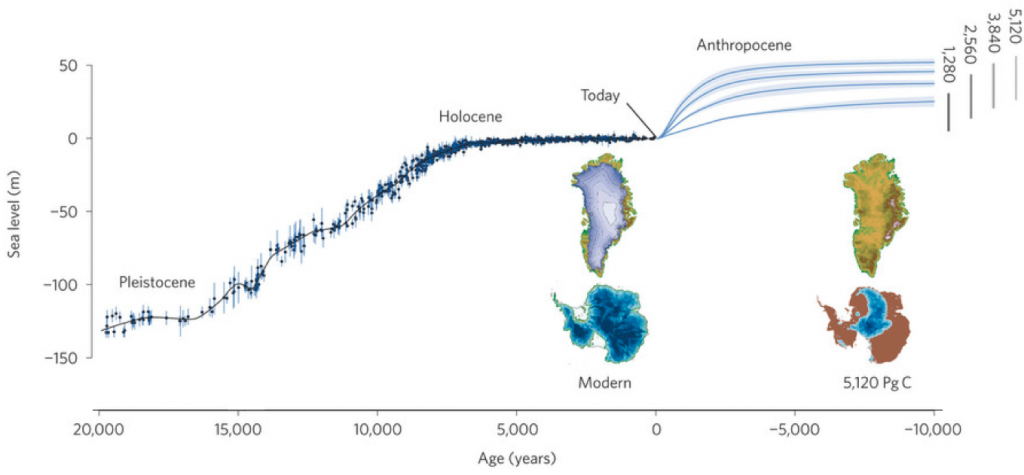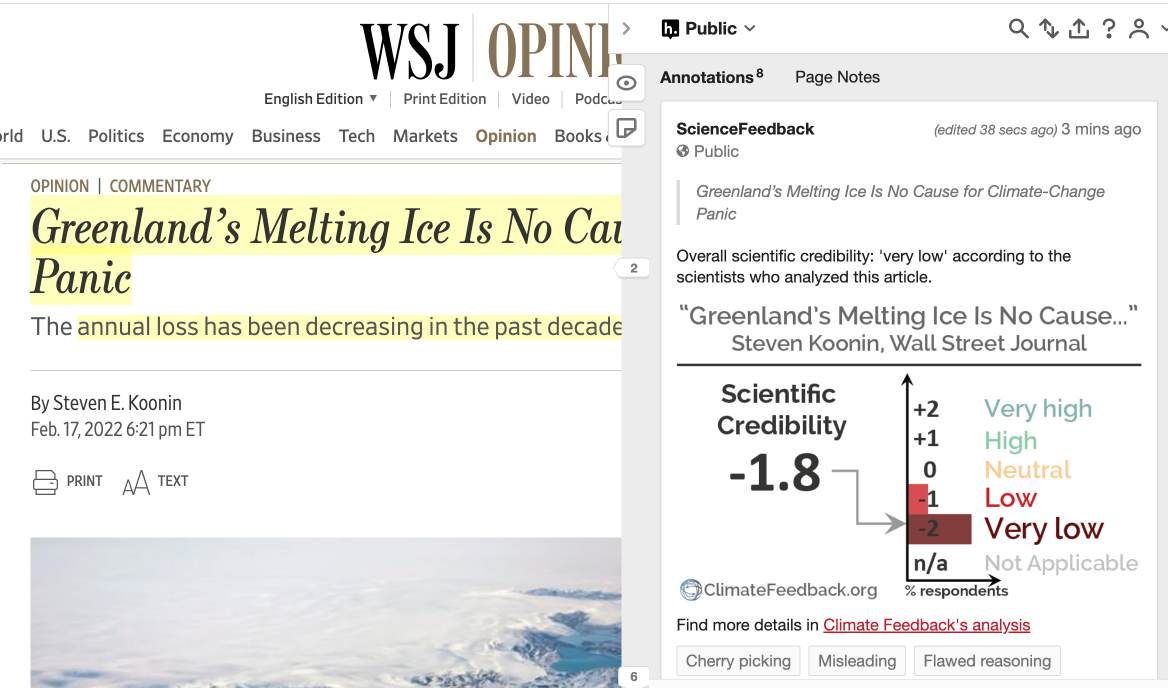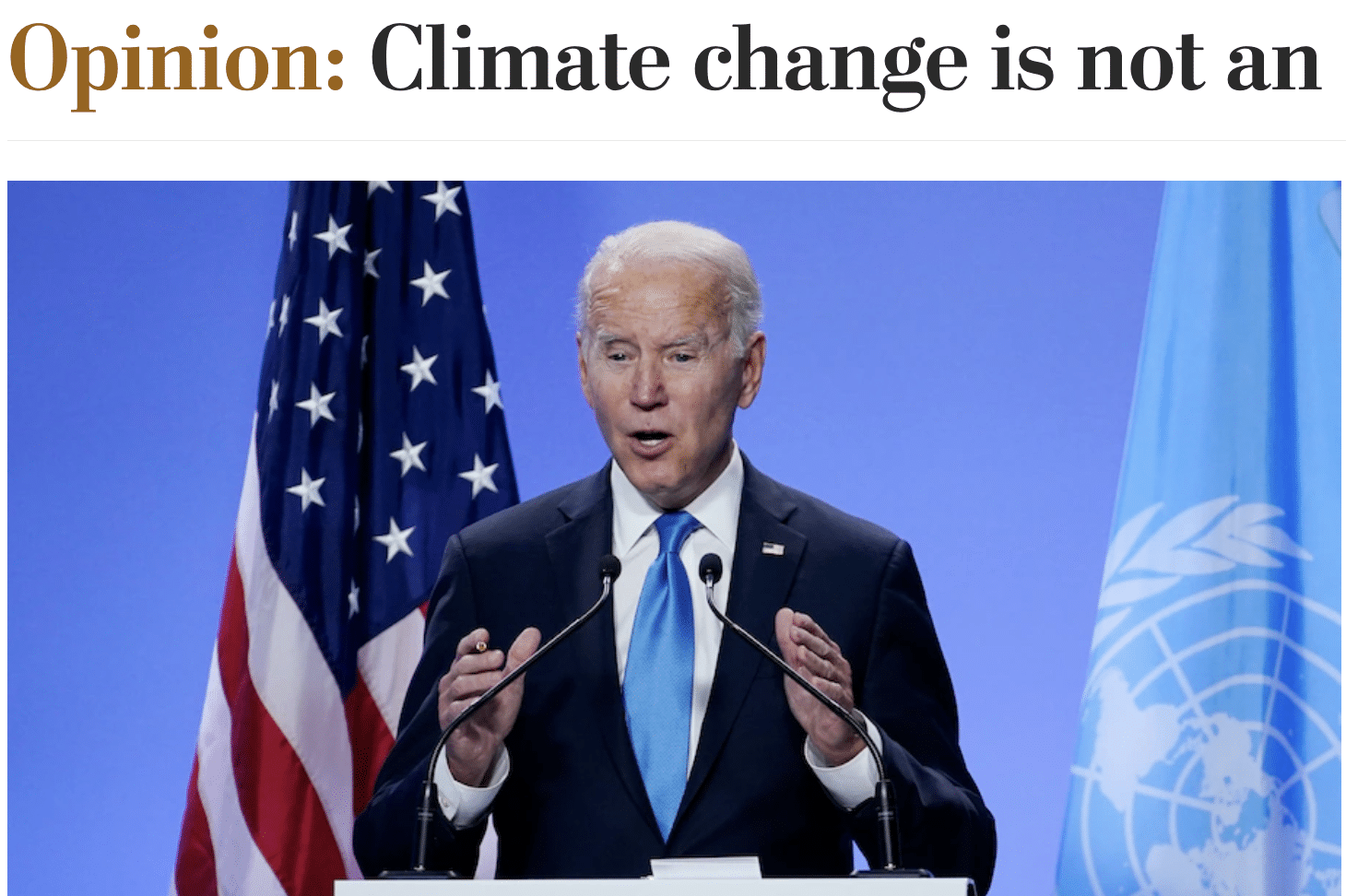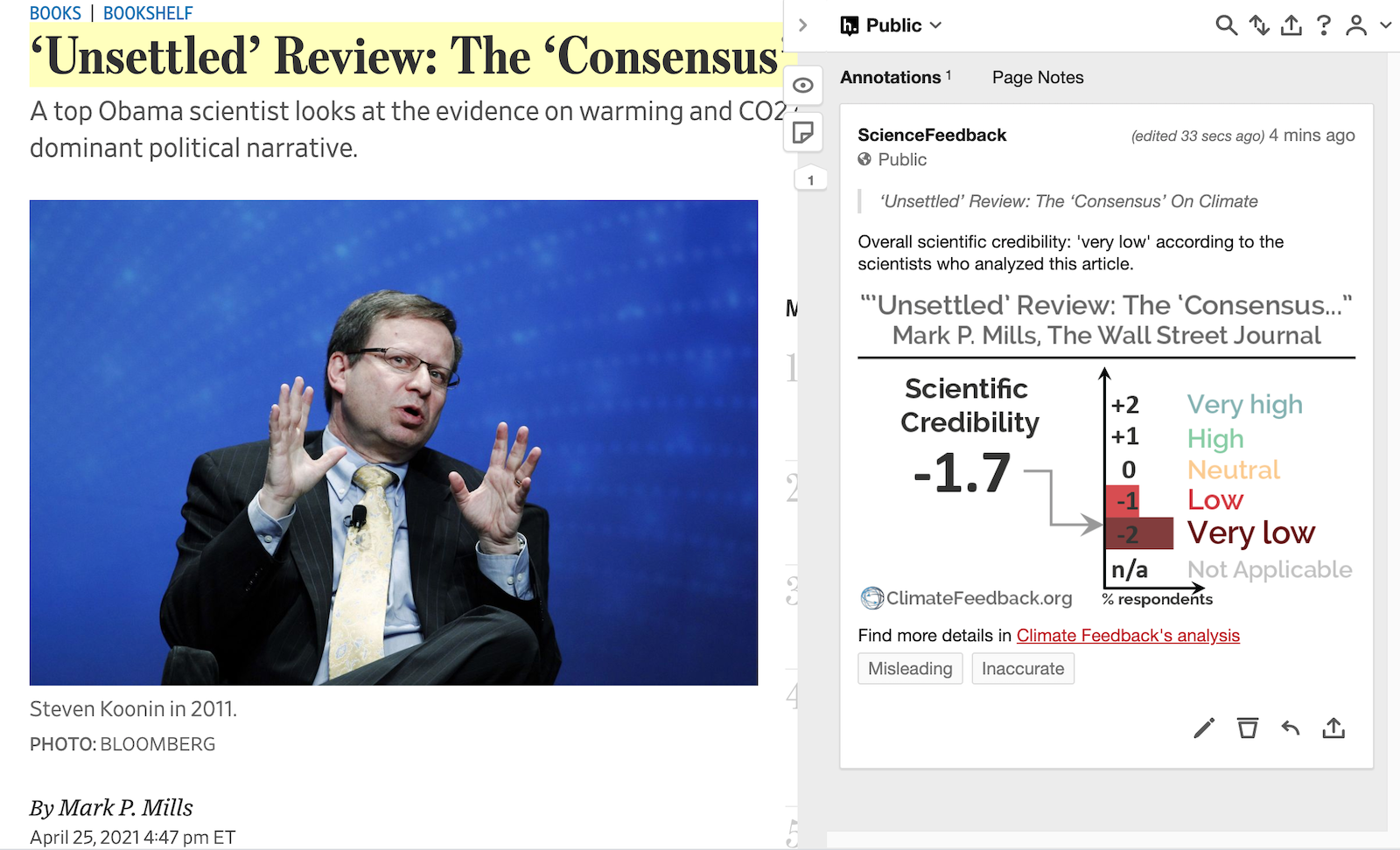- Climate
Analysis of "Seas Are Rising at Fastest Rate in Last 28 Centuries"
Reviewed content
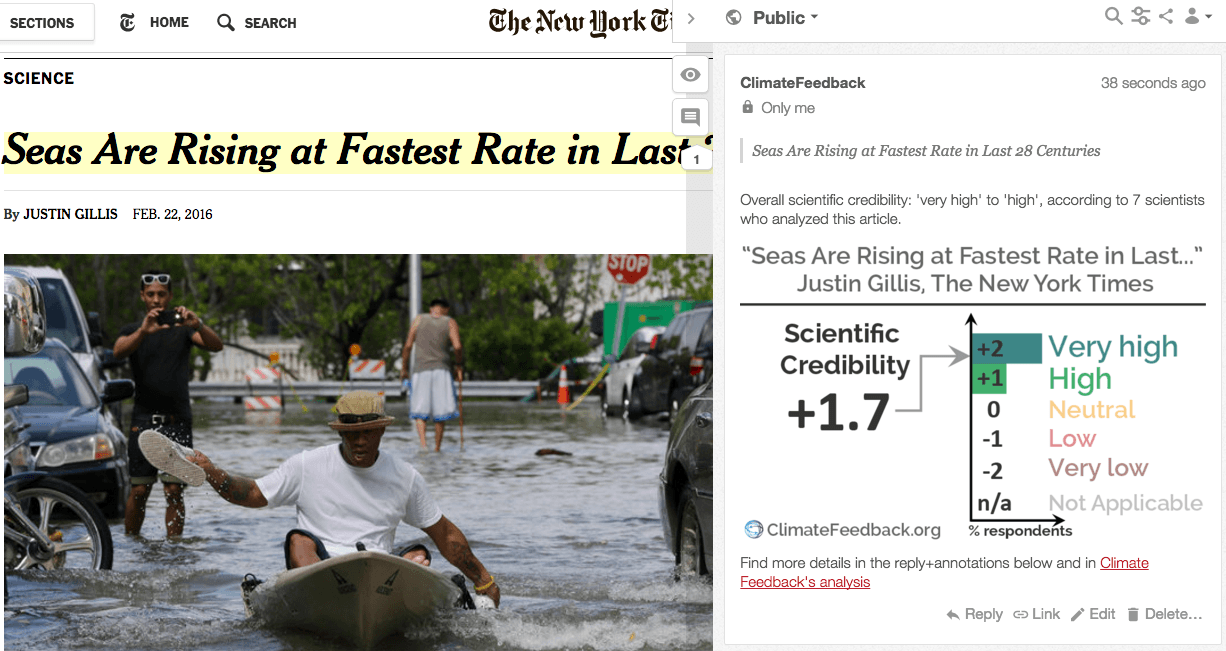
Published in The New York Times, by Justin Gillis, on 2016-02-22.
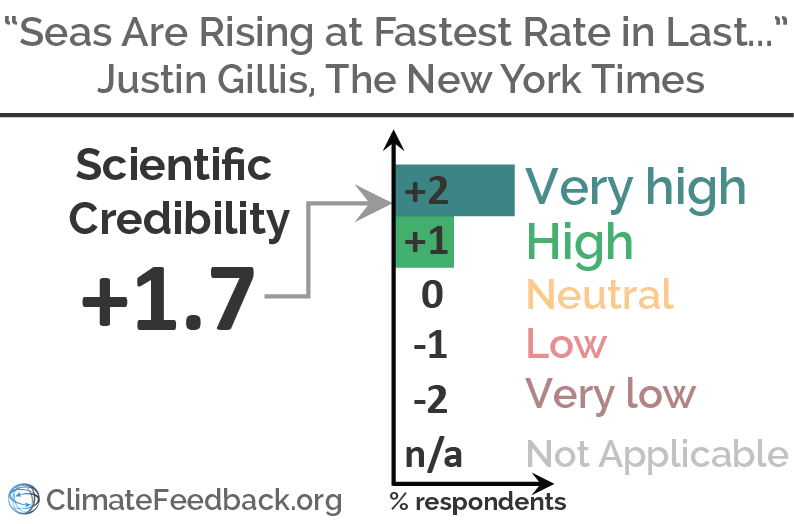
SCIENTISTS’ FEEDBACK
SUMMARY
Justin Gillis reports on new results showing that the current rate of sea level rise is unprecedented in a record dating back 2,000 years. The article explains that this rise is attributable to human-induced climate change, and that higher sea levels are already impacting coastal communities. The seven scientists who reviewed the article confirmed that it is accurate and insightful.
Note that results about the increased frequency of coastal flooding in the US discussed in this article are from a Climate Central’s analysis that has not undergone formal peer-review. We wish to stress this point as peer-review is a mechanism that allows to increase the trust one can have in a result and ensures the work meets higher standards of scientific quality.
See all the scientists’ annotations in context
GUEST COMMENTS
The article by Kopp et al (on which The New York Times is reporting) provides a quite convincing attribution of much of 20th century and early 21st century sea-level rise to human-induced warming. It shows that the recent rate of rise in sea level is unprecedented in more than 2000 years of record and that these changes are almost certain to accelerate substantially into the future. Interestingly this new analysis also appears to reinforce the conclusions of the IPCC Fifth Assessment Report about sea-level rise expectations through the 21st century. While human activity has been linked to sea level rise forecasts before, here human activity is linked to observed changes, which is an important improvement.
REVIEWERS’ OVERALL FEEDBACK
These comments are the overall opinion of scientists on the article, they are substantiated by their knowledge in the field and by the content of the analysis in the annotations on the article.
This article is an accurate and insightful summary of the recently published research on this topic. Justin Gillis has a strong background in this topic which comes across through his careful language and nuanced understanding of the issues.
Note however that the Climate Central report is not peer-reviewed literature. This was not clear in much of the press coverage and was not clear at the beginning of this article where these two “studies” are presented as equals. Even if the report by Climate Central is correct, it should not be elevated to the status of peer-reviewed literature by the media.
The article is highly accurate and cites relevant new work, but omits other recent relevant work (Andrea Dutton has provided in annotations) and what might be helpful discussions of the key mechanisms of sea level rise. These are relatively minor points.
The article gives a good overview and insight into the main conclusions of both the Climate Central report (by Dr. Strauss) and the research paper (by Dr. Kopp), and links the two well.
The article gives a good account of some new papers that recently have been published about the global sea level.
The article does a very good job reporting the papers and is entirely accurate. I did not spot any errors or even minor glitches–well done. Mr Gillis does an exemplary job in reporting science factually and accurately.
Notes:
[1] See the rating guidelines used for article evaluations.
[2] Each evaluation is independent. Scientists’ comments are all published at the same time.
KEY TAKE-AWAYS
The quotes below are from Justin Gillis’ article.
“in the absence of human emissions, the ocean surface would be rising less rapidly and might even be falling.”
To clarify: the study by Kopp et al uses hypothetical temperature scenarios to show that if temperatures in the 20th century had been similar to the average temperature of the years 500-1800, sea-level rise would have been less rapid or even falling.
“Based on extensive geological evidence, scientists already knew that the sea level rose drastically at the end of the last ice age… They also knew that the sea level had basically stabilized, like the rest of the climate, over the past several thousand years”

Founder & Executive Director, Science Feedback
This statement is supported by a recent report in Nature Climate Change written by 22 scientists.
The figure below shows that global sea level rose by about 100 meters at the end of the last ice age 15 thousand years ago and that sea level had stabilized more than 5 thousand years ago. This helps clear a common misconception that current rate of sea level rise could be simply due to the end of the ice age.
Long-term global mean sea-level change for the past 20,000 years (black line) based on palaeo sea level records and projections for the next 10,000 years for four emission scenarios. From Fig. 2 in Past and future changes in global mean sea level
“The worsening of tidal flooding in American coastal communities is largely a consequence of greenhouse gases from human activity, and the problem will grow far worse in coming decades, scientists reported Monday.”
An accurate summary of the research that was published by Kopp et al. in PNAS. In fact, if anything, it is somewhat of an understatement given that the worsening of tidal flooding may be ENTIRELY due to the influence of greenhouse gases from human activity. This is based on the statement in the published research by Kopp et al (PNAS) that sea level in the 20th century may have “very likely risen by between -3 cm and +7 cm “, which is a way of saying that it may have fallen by 3 cm or risen by up to 7 cm over that time frame in the absence of [human-induced] global warming.
While the rises in sea levels to date are small, they have had impacts and greatly increased nuisance flooding along the US East Coast as Strauss et al demonstrate.
As sea levels continue to rise this will be extremely challenging to residents of the US East Coast and globally around the world’s coasts. This shows the benefits of sustained reductions in greenhouse emissions. Further these coastal communities will need to adapt in a systematic way to the sea-level rise that has occurred which is also challenging.
“roughly three-quarters of the tidal flood days now occurring in towns along the East Coast would not be happening in the absence of the rise in the sea level caused by human emissions.”

Founder & Executive Director, Science Feedback
The trend in the number of “coastal flood days” in the US is convincing supporting evidence of this conclusion.

Visualization created by Climate Central
“Experts say the situation would then grow far worse in the 22nd century and beyond, likely requiring the abandonment of many coastal cities.”
This statement is accurate. See Clark et al. (2016) Nature Climate Change (Consequences of twenty-first-century policy for multi-millennial climate and sea-level change, currently available online) or Dutton et al. (2015) Science, Sea-level rise due to polar ice-sheet mass loss during past warm periods.
“One of the authors of the new paper, Dr. Rahmstorf, had previously published estimates suggesting the sea could rise as much as five or six feet by 2100.”
This is an accurate representation of the previous and current research. It might have been nice to also note here that because the models he used probably don’t fully account for the rate of mass loss of ice from the polar ice sheets that the 3-4 feet estimate in the current research and in the IPCC may well underestimate the eventual magnitude of global mean sea-level rise by 2100.
“In an interview, Dr. Rahmstorf said the rise would eventually reach five feet and far more — the only question was how long it would take. Scientists say the recent climate agreement negotiated in Paris is not remotely ambitious enough to forestall a significant melting of Greenland and Antarctica, though if fully implemented, it may slow the pace somewhat.”
This is an accurate summary. To learn more about the eventual degree of melting in the future, see Clark et al (2016) Nature Climate Change (Consequences of twenty-first-century policy for multi-millennial climate and sea-level change, currently available online).

